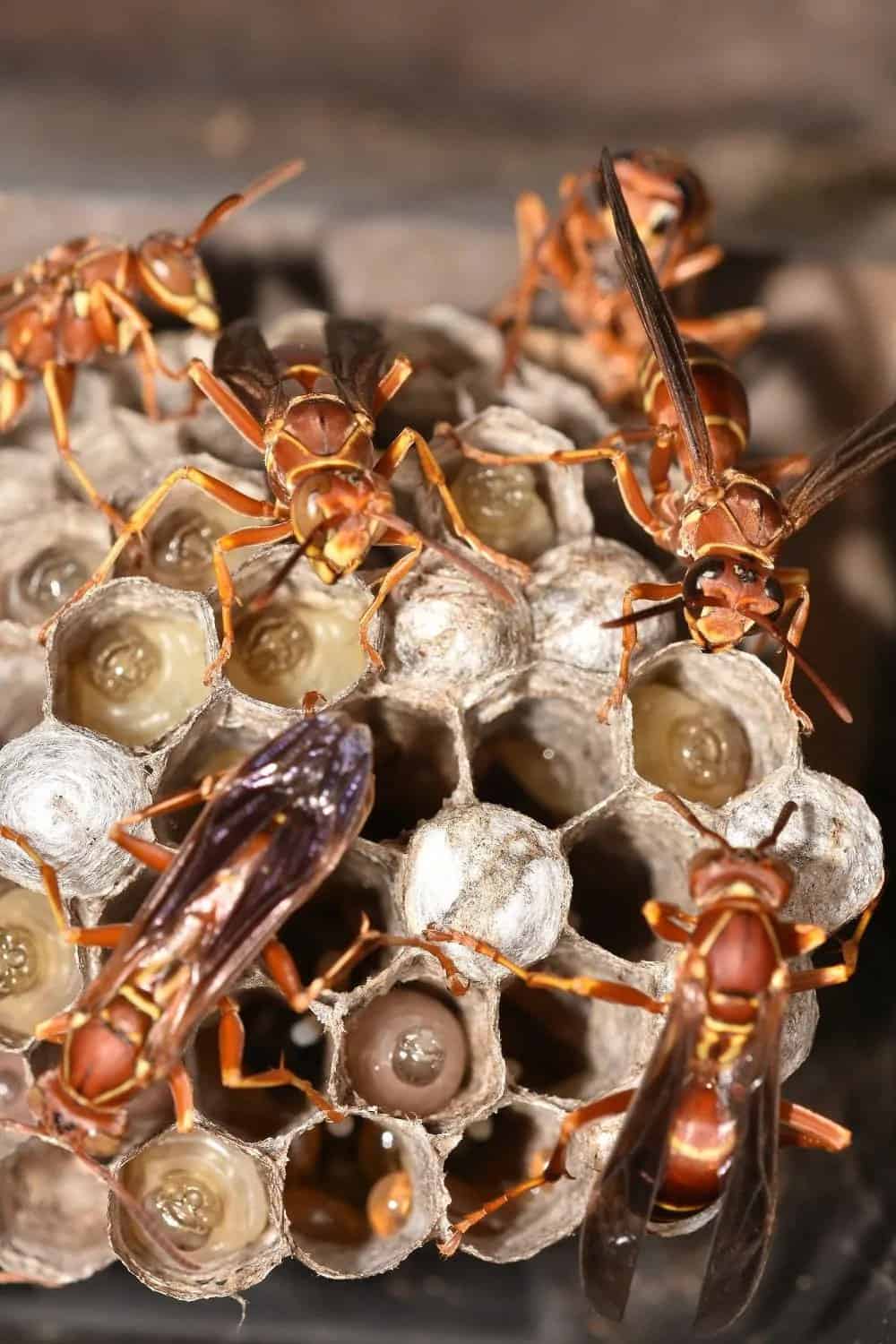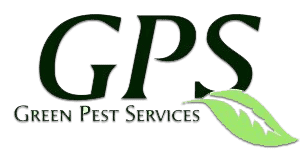Pest Library
Big Headed Ants
The Big Headed Ant (Pheidole megacephala) is easily identified by its soldiers which feature a disproportionately enlarged head, thus their name. These ants are notoriously difficult to control in part because colonies typically employ multiple queens and interconnected nests forming so called “super colonies”. These highly pervasive pest generally prefer protein feeding on other insects and small animals such as lizards. Though biting of humans is extremely rare, bigheaded ants are one of the most intolerable pests in South Florida. Should someone be so unfortunate as to have their home the target of this species of ant, their home will quickly become inundated without a single room in the house without their presence. The first sign is commonly piles of dirt forming around the baseboards or in the garage. For this reason, bigheaded ant infestations are often misdiagnosed as a termite problem by homeowners.
How to get rid of Big Headed Ants
Controlling Big Headed Ants as a homeowner can be a daunting task, one that quickly becomes expensive. The real barrier to control is not difficulty in actually killing the ants, but instead the nature of their colonies being so massive and populous. You ultimately end up with seemingly endless piles of dead ants in your home without actually ever controlling the problem. For most, that’s not much of a solution. If you do with to attempt control yourself without the aid of a professional, it is best to use protein based baits around the outside perimeter of the home. Granular insecticides are unlikely to be effective.
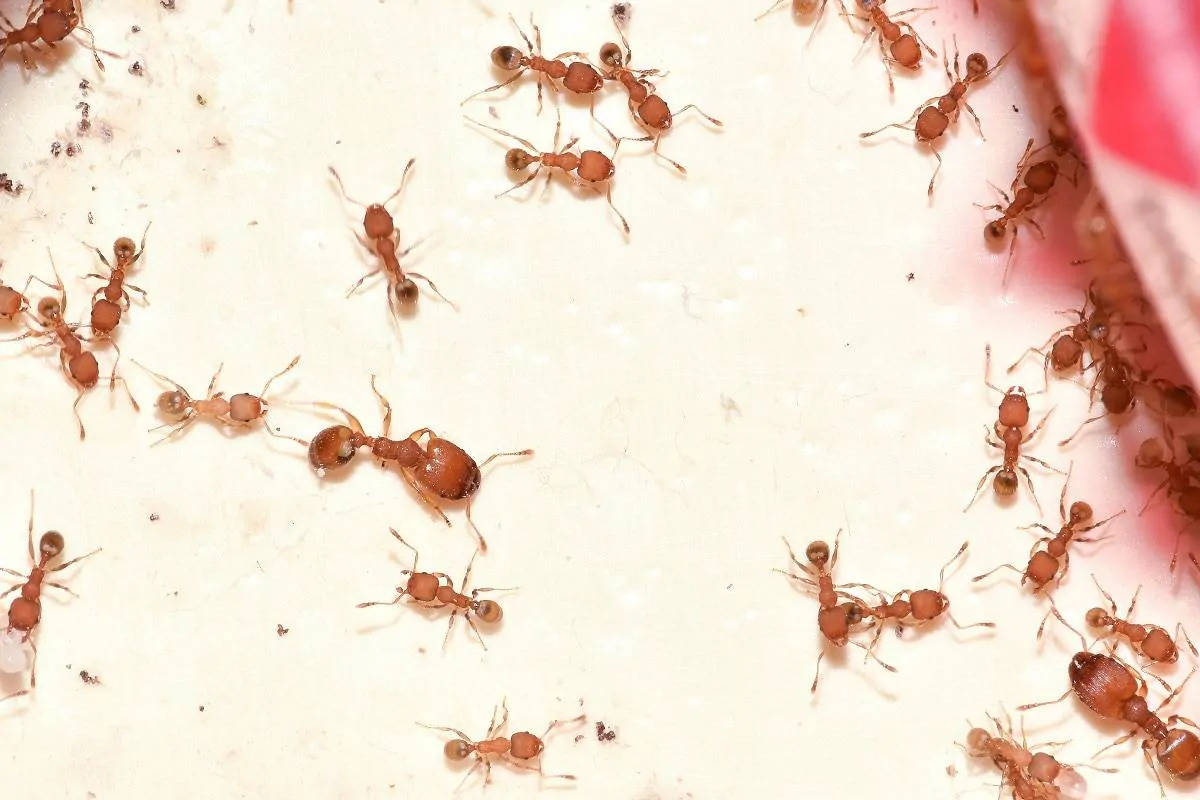
Carpenter Ants
Contrary to popular belief, Carpenter Ants (Camponotus floridanus) do not eat wood. They are capable however of damaging soft moist wood if they build a nest in it. Luckily for us Floridians, our variety are much less prone to this than some northern species of carpenter ants. If fact, pest professionals in Florida are sometimes asked to fill out an official state inspection report for homeowners regarding Wood Destroying Organisms (WDO) and Carpenter Ants aren’t even listed on this report. However, despite the misconceptions about their diet, the Florida Carpenter can terrorize home and business owners alike. These extremely large pests are most active from dawn until dusk and regularly invade homes in our area. They readily build nests inside attics, mulch beds, underneath porches and in old stumps. Though they resemble oversized Fire Ants, Florida Carpenter Ants do not sting. Their oversized mandibles however can make for a painful bite.
How to get rid of Carpenter Ants
Unlike most common pests encountered by residents on the Treasure Coast, Carpenter Ants are relatively easily controlled without professional help, though some studying and effort is always required. Due to their reclusive nature locating a Carpenter Ant nest can often be a challenge. Therefore, its recommended to allow the ants to do the finding – use a protein based bait around areas of activity and suspected harborage. Stay away from carbohydrate based “sweet” baits such as Terro as Carpenter Ants tend toward protein based feeding.
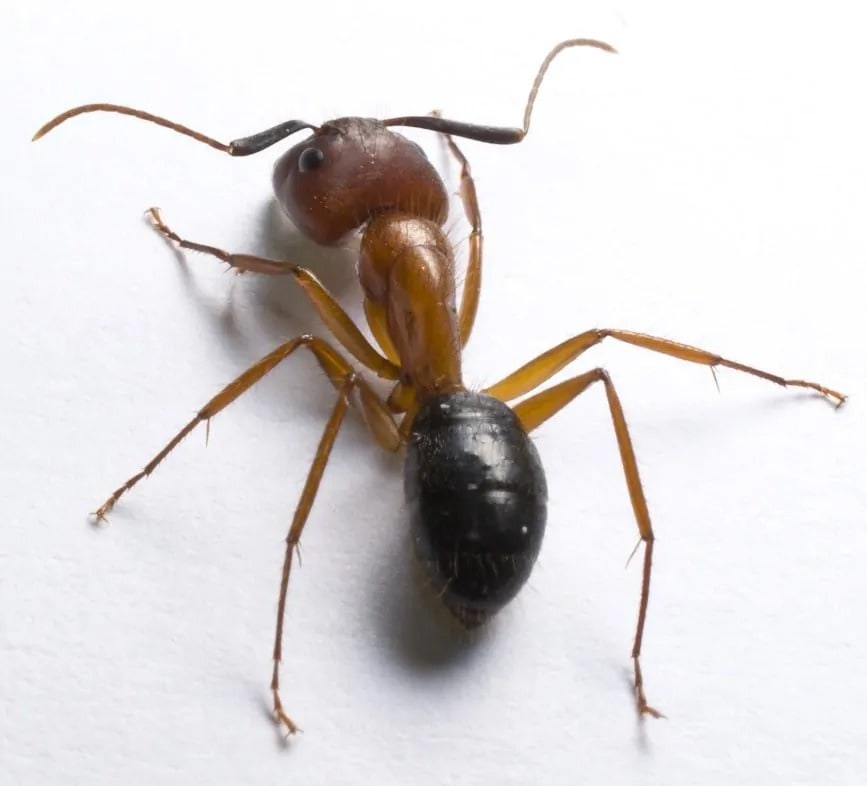
Fire Ants
Red Imported Fire Ants (Solenopsis invicta) can be a painful pest. This invasive species (Solenopsis invicta) is native to South America and was first introduced to the United States via cargo ships in Mobile, Alabama sometime between 1933 and 1945. From there these stinging insects spread rapidly across the southeast, eventually making their way to South Florida where they thrive in our hot and humid climate. Thankfully in recent years there appears to be a rapid decline in the prevalence of Red Imported Fire Ants, though currently the evidence is largely anecdotal. Theories as to the cause of the decline are a combination of pathogens and completion from competing ant species, notably the Big-Headed Ant (something this pest professional has observed first hand).
How to get rid of Fire Ants
Unfortunately, the options for folks wanting to eliminate fire ants using home remedies is very limited. Ignore old wives-tales about using cornmeal and grits to eliminate Fire Ants. The thinking goes that the ants will ingest these products and the moisture in their stomachs will cause the grains products to expand causing them to explode. There is no credible evidence this has ever been effective and Fire Ants feed on protein, not carbohydrates. One way to get rid of a Fire Ant nest yourself is to pour a pot of boiling water directly on to the nest. This method though effective has several drawbacks, most notably it requires someone carry a pot of boiling water out into their yard. Boiling water will also damage turf, so if you care about the look of your lawn this method should be avoided. Most commonly homeowners and businesses will purchase granular insecticides to spread on their lawn. Unfortunately, the products available to homeowners are not the most effective and only produce moderate levels of control while costing about what one would pay for a professional service. Bottom line: Fire Ants are generally a pest best left to the professionals.
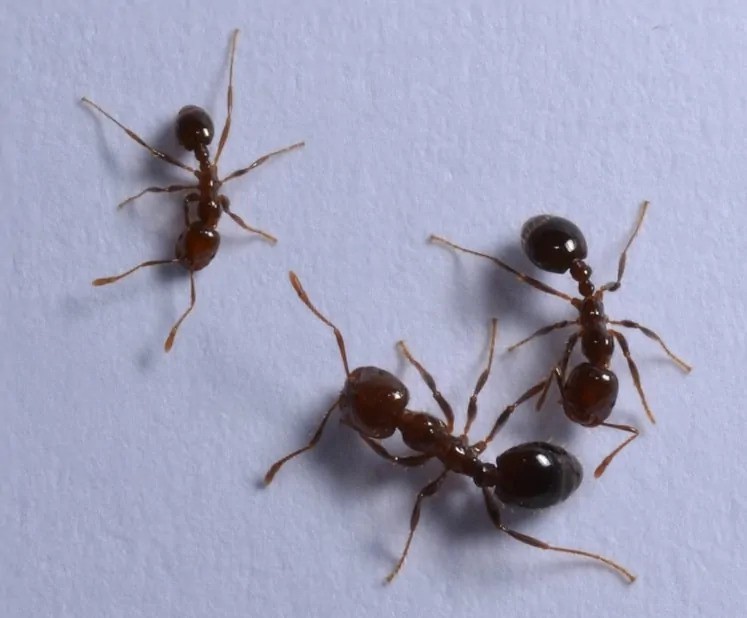
Ghost Ants
Ghost Ants (Tapinoma melanocephalum), sometimes referred to as Sugar ants, are a very common pest in South Florida and the Treasure Coast. These ants are extremely small and capable of accessing structures with ease. Their nearly transparent abdomen make them sometimes difficult to see and identify or mistaken for tiny spiders. The Ghost Ant has a nearly insatiable thirst, constantly seeking sources of water. This is why there are just as commonly found in the bathrooms of homes as they are in the kitchen despite the absence of food. Though water is a constant need for these tiny bugs, they will readily infest foodstuffs as well. The Sugar Ant is so called because it generally feeds only carbohydrate based foods.
How to get rid of Sugar Ants
Luckily for the homeowners of St. Lucie and Martin County, their most common indoor pest, is relatively easily controlled. Like all pest problems, the first measure of control should always be exclusion. Caulking around doors and windows as well as foaming and sealing potential entry points such as where A/C and spigot pipes enter the home.
Beyond exclusion, baiting is the most effective means of control for these ants. Homeowners and business commonly use a readily available ant bait called Terro. Though this product is not as effective as professional products it can be useful against Sugar Ants if employed correctly. Try using this bait on the outside of the home to draw them out of the structure as opposed to in.
If neither of these methods prove effective, consider saving yourself the hassle and possibly money by hiring a local pest control company.
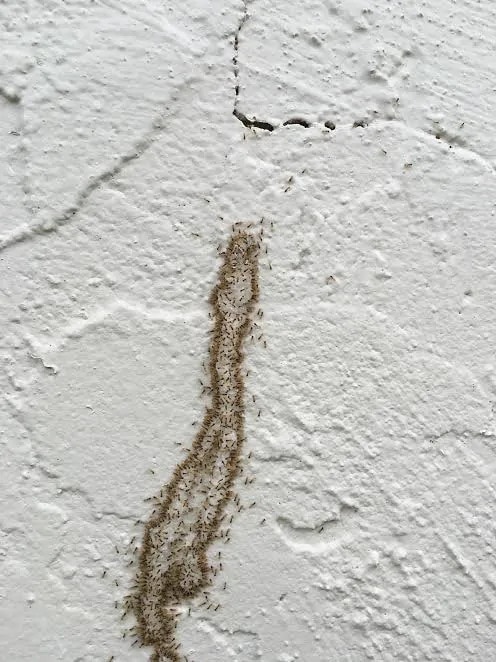
Twig Ants
The Twig Ant (Pseudomyrmex gracilis) is relatively large ant with a painful sting. Common throughout Florida these wasp-like ants are non-native and originate from Mexico. They feed on other insects and honeydew staying close trees and shrubs. The Twig Ant is generally not considered a major pest because they are rarely found in homes and their populations are fairly sparse by ant standards. Bites are rare, but most commonly encountered when doing yard work and brush clearing.
How To Get Rid Of Twig Ants
The Elongated Twig Ant is one of the rare cases where an over the counter granular insecticide is likely to work well. Concentrate especially around the base of trees and shrubs. Most granular insecticides need to be watered in, so it is important to remember do this soon after the product is applied.
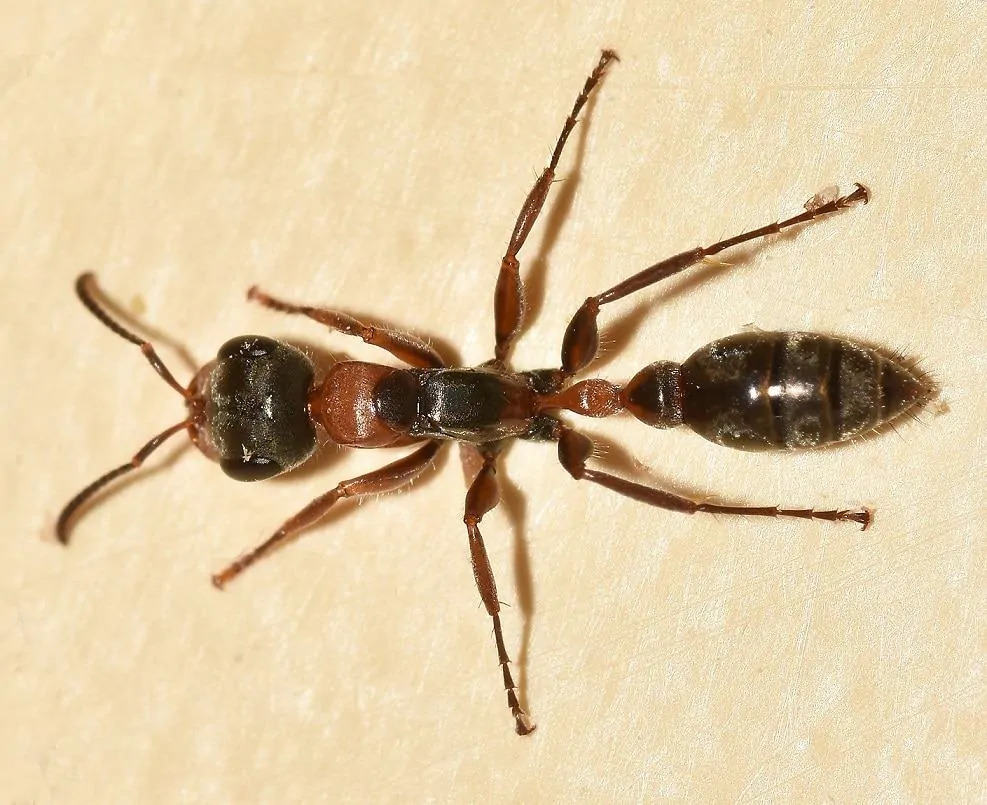
White Footed Ants
Despite their name, White Footed Ants (Technomyrmex albipes) appear pure black. Its only with the aid of a magnifying glass can one observe the “socks” on these invasive pests. A fairly recent introduction to St. Lucie and Martin County, White Footed Ants feed on sugary carbohydrate based sources of food. They have been observed forming a symbiotic relationship with Mealybugs. The ants will protect the Mealybugs from predators because they secrete honeydew while feeding on (and damaging) a host plant. This way the White Footed Ants are not only an indoor nuisance but also contribute to the destruction of ornamental plants. These ants prefer shady areas and thrive on flowering vegetation.
How to get rid of White Footed Ants
With this particular pest, trimming of vegetation back from the home can make a significant difference in the likelihood of this pest invading the home. Choices in vegetation surrounding homes and buildings also play a very real role in the pests someone is likely to encounter. Flowering plants and trees, as well as ornamentals easily susceptible to insects that produce honeydew (mealybugs, aphids, scale), are a significant factor in the presence of this ant. Beyond this, a professional pest control service is recommended for control of these ants. One major reason control can be difficult is that White-Footed Ants do not share their food the way many other species of ant do. As a result, baits are largely ineffective and restricted professional pesticides are required to achieve control.
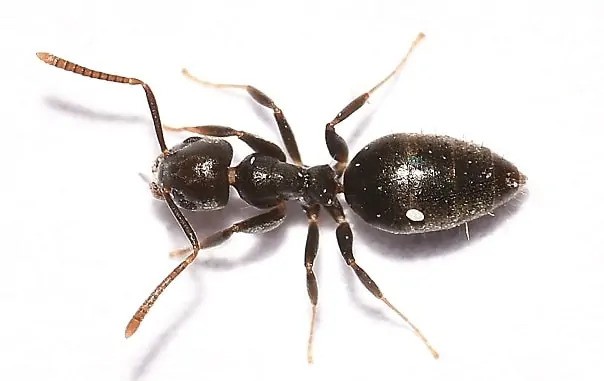
Bed Bugs
Bed Bugs (Cimex lectularius) are a parasitic insect, feeding primarily on humans. These blood sucking bugs are largely active at night, returning to secluded and typically difficult to reach harborages during daylight hours. A Bedbug bite is typically painless, though localized swelling and redness are common as well. These bugs thrive in typical indoor conditions and can survive up to a year without feeding. They are typically transmitted from place to place via humans, as they typically do not live outside and stay as close to their hosts as possible. Though bed bugs were nearly eradicated in the 1940’s their population has since rebounded and has been climbing since the mid 90’s. Bed bugs have developed resistance to many common pesticides making their control increasingly difficulty.
How to get rid of Bed Bugs
No. These bugs are extremely difficult to control for multiple reasons. Their biological nature and their behavior alone present unique challenges to exterminating bed bugs. These facts, coupled with their high prevalence for pesticide resistance, mean attempting to do your own bed bug pest control will be both expensive and ineffective. That alone will cause people to lose sleep, even without being fed upon every night by a parasitic insect. With all that said, there are some measures on can take themselves in trying to get rid of bed bugs. First and foremost, an ounce of prevention is worth a pound of cure. Whenever staying at a hotel or motel, always inspect mattress folds and night stands for any signs of bedbugs. These include both bed bugs themselves and very small black dots or smears. This may be bed bug feces – dried human blood. A mattress cover is a valuable tool for fighting these pests. Any bugs trapped inside of the cover will eventually starve to death. Another important thing to keep in mind when doing your own bed bug control, DO NOT move potentially infested items from one room to the other, spreading the bugs around. The bottom line for most people though is this: If you suspect you have bed bugs or some other biting insect, contact a pest control professional.
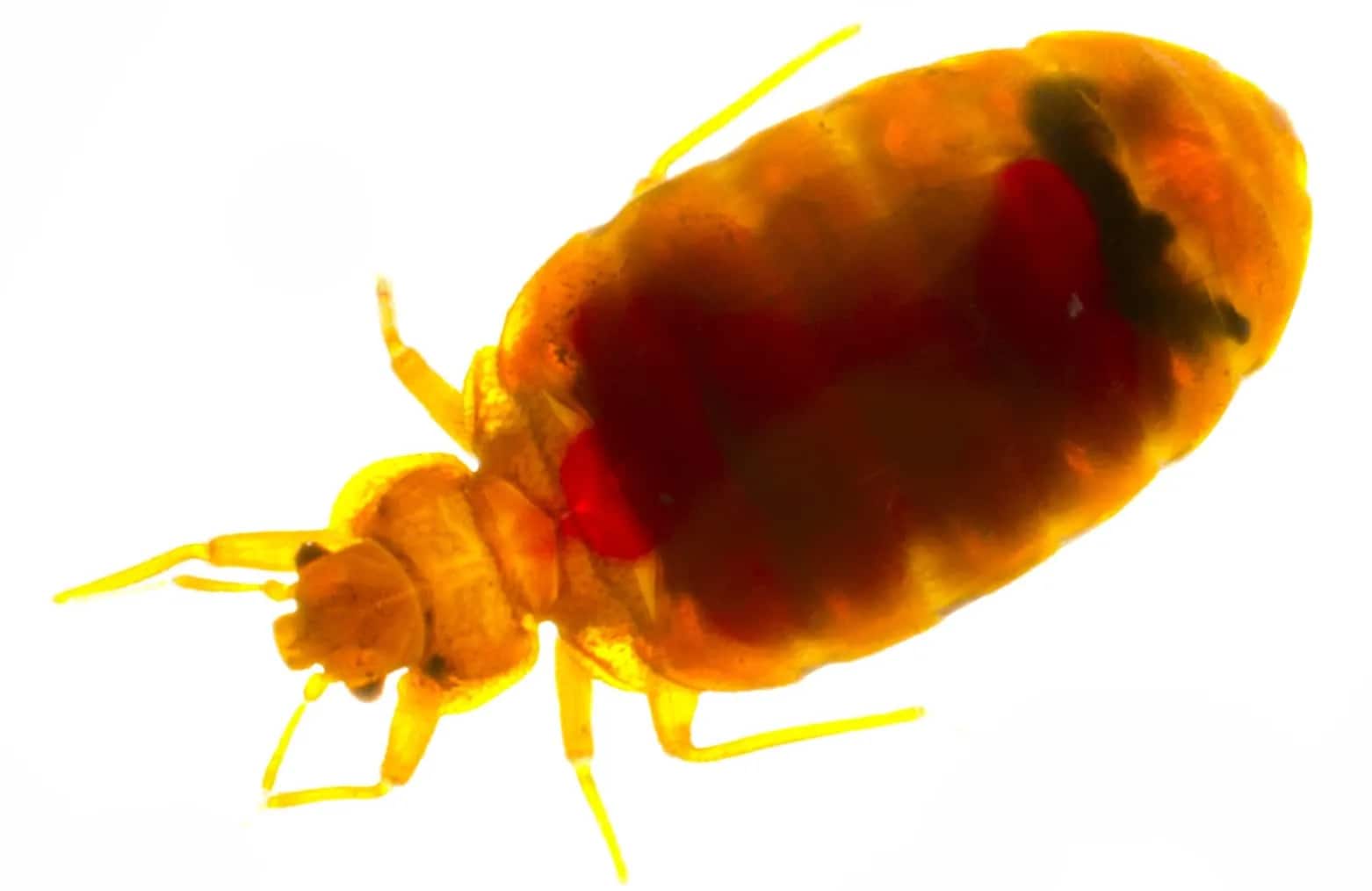
Cockroaches
American Cockroaches are often referred to in Florida as Palmetto Bugs or Water Bugs, but make no mistake, they are a roach. These large cockroaches are very common in Florida and the Treasure Coast is no exception. Though Palmetto Bugs are technically capable of flight, it is an uncommon behavior. They require very high levels of humidity in order to survive. They thrive in sewer systems, mulch beds, wood piles, and underneath decks and sheds. Though it is rare for them to truly infest a home due to the lower humidity, it is possible if sufficient moisture is available. For this reason, it is important our seasonal Snow Birds remember to keep the A/C on during away months.
How to get rid of Palmetto Bugs
Because Palmetto Bugs are so common in our area in our area, avoiding them completely without a regular bug service can be difficult. However, eliminating contributing factors to their presence can make the difference between an occasional invader and fearing what you might discover when you turn the lights on every morning. Keep moisture levels in and around your home to a minimum. Piles of wood or debris, should be removed or kept as far from the home as possible. Clogged, leaky gutters, leaky spigots, and frequently moist home siding will promote infestations in and around the home. If small American Cockroaches (often mistaken for German Cockroaches) are being found inside the home, it’s a sure sign there is a moisture problem very near or inside the home, and should be investigated further. Immature Palmetto Bugs inside the home are often the first sign of a more significant problem regarding moisture and mold.

German Cockroaches
Aside from Bed Bugs, German Cockroaches are perhaps the most difficult pest to eradicate. Their ability to reproduce rapidly, adaptation to living with humans, insecticidal resistance, and clever behavior, make for a formidable enemy to public health. Heavy infestations can lead to asthma, particularly in children, due to the build of the roach’s fecal matter inside the home. Unlike most other cockroaches, German Roaches thrive under typical living conditions inside a home. They will tend to congregate in kitchens and bathrooms where food and water are readily available. These small roaches are most active at night and actively try to avoid detection.
How to get rid of German Cockroaches
German Cockroach control should not be attempted using home remedies or over the counter products. Beside that these methods are unlikely to work, they often make the problem worse, while also contributing to insecticidal resistance.
A common problem pest management professionals encounter is the use of so called “bug bombs” for roach infestations. Bombing for roaches is rarely effective and contributes to pesticide resistance in roaches. Though foggers rarely solve the problem, they do drive the cockroaches deeper into walls and into uncommon areas of the home in order to avoid the product. This makes control much more difficult. If you suspect you have a German Cockroach problem, the safest and most cost-effective solution is to hire a pest control professional.
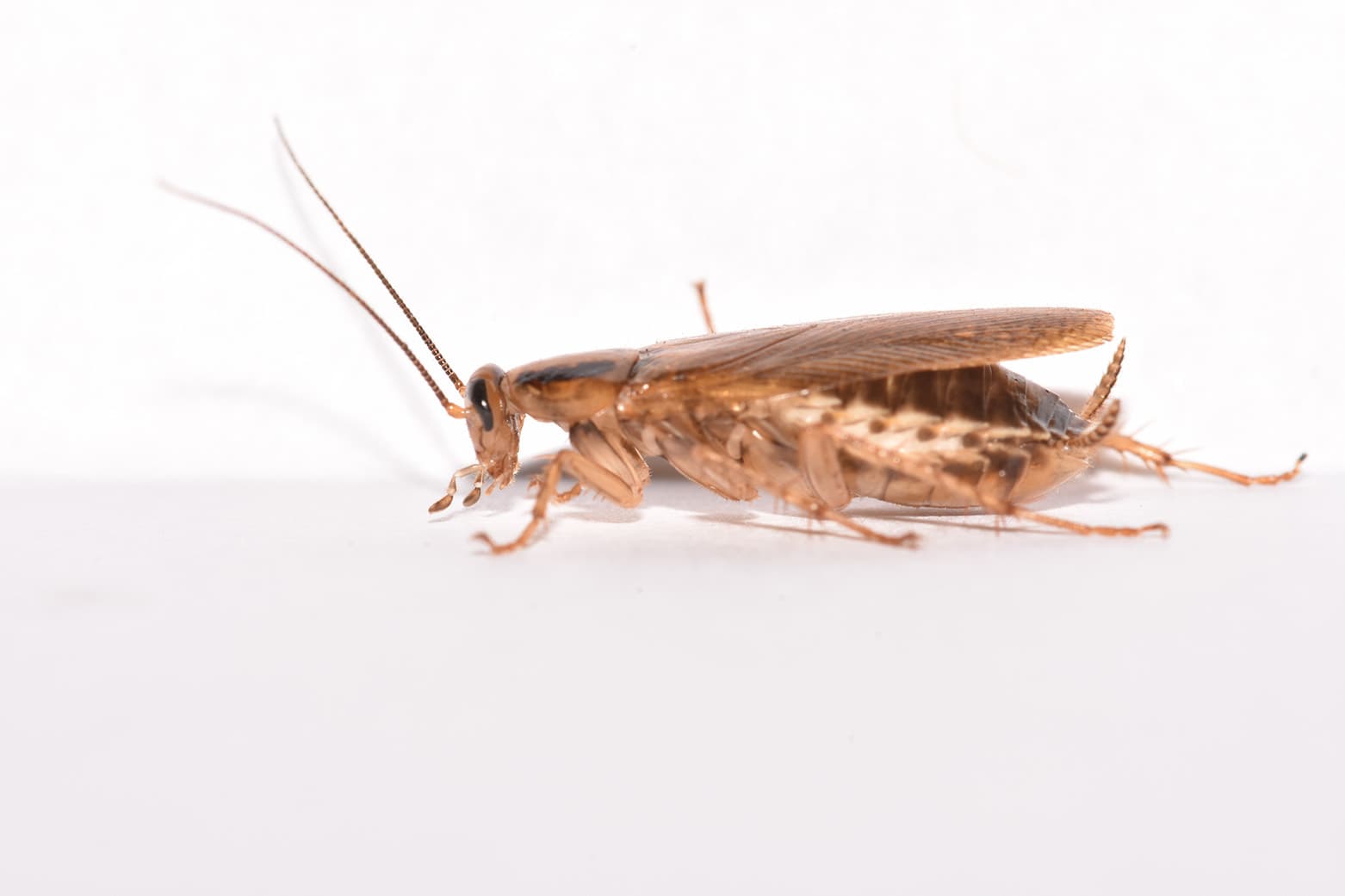
Earwigs
Earwigs are a small slender insect with a characteristic set of pincers at their hindquarters. They are present on every continent but Antarctica. Species of Earwig common in Port St Lucie feed largely on decaying plant matter and other insects. Like most insects, they prefer a warm humid climate with plenty of access to water. This makes the inside of most home an undesirably environment for these bugs. However, given their prevalence around homes in mulch beds and lawns, it is not at all uncommon to find the occasional Earwig in the home. Heavy rains or the over use of sprinklers can flush Earwigs from the hiding places and force them indoors in search of higher ground.
How to Get Rid of Earwigs
Because Earwigs thrive in moist areas with ample organic matter to feed on, consider synthetic mulch material instead of wood. Also, keeping trees and hedges trimmed well back from the home is always a good idea for preventing pest problems. Plants planted too close to homes create moisture problems due to constant shade around the base of the house. Pest control for Earwigs is relatively easy with numerous pet and child safe approaches that can be affective. Traps, dusts, sprays and exclusion methods are all suitable for Earwig elimination.
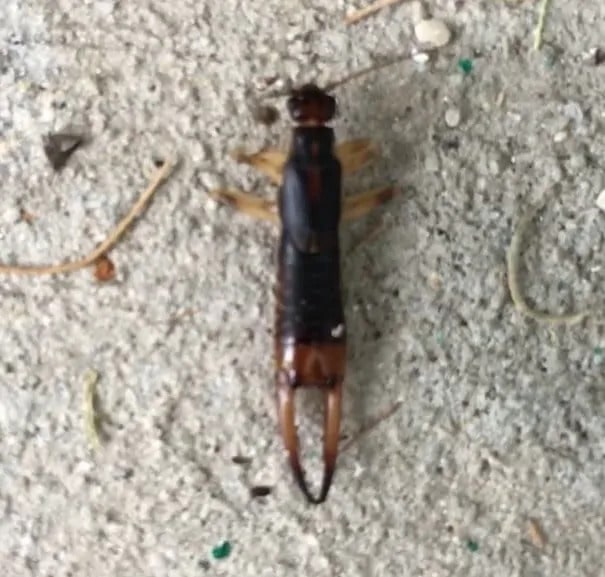
Silverfish
Silverfish are small grey colored insects with a distinct wiggling pattern of movement – thus their name. Silverfish are often found in homes on the walls or underneath infrequently moved objects. These reclusive bugs have been known to eat holes in paper documents and pictures, making for a potentially serious nuisance. They feed on carbohydrate based foods so cereals and grains are also potential food sources for these pests. They are common throughout the world but thrive in the high humidity conditions of the Treasure Coast.
How to Get Rid of Silverfish
Stuart and Port St Lucie have many seasonal residents who turn their thermostat up during the summer months that they’re away. This might be helpful for keeping electric bills down, but it allows humidity to rise within the home creating an ideal environment for Silverfish. Silverfish are an extremely common pest in our area but fortunately are easily controlled using common pest control methods. Unlike some more difficult indoor pests, pest control for Silverfish can easily be done while employing eco-friendly, pet safe, and child safe exterminating products.
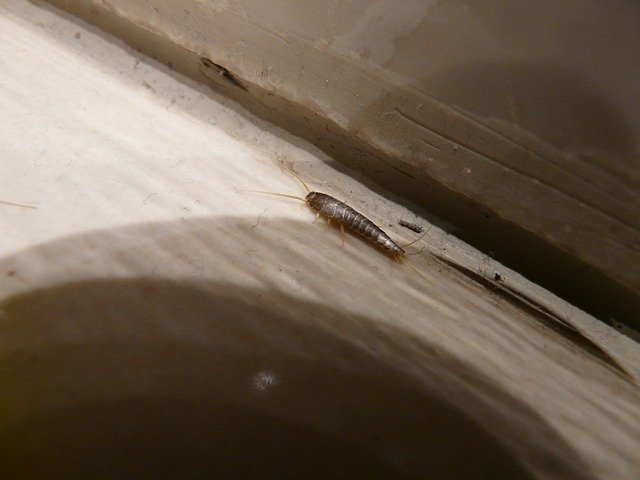
Spiders
Spiders (order Araneae) are prolific pests in South Florida. Spiders are voracious hunters and the warm moist climate of south Florida produces plenty of insects and opportunities for them feed. With this in mind, some homeowners take a somewhat passive attitude towards spiders – hoping they will do their part to keep the insect population around the home down. Many others would rather burn their home to the ground than share it with it these eight legged carnivores. Regardless of your attitude towards spiders, all are poisonous and some are capable of being a very serious health hazard to people and pets. There can be great variance in the species of spider someone might encounter based on the surrounding environment. For example, large web-less hunting spiders, such as the Wolf Spider, tend to be more common near the beach or less populated wooded areas (Palm City, and western Port St. Lucie) where they are likely to find more suitable prey. On the contrary, spiders that acquire prey through catching them in a web, like the Brown and Black Recluse spiders, are more common in urban areas where they use artificial lights that attract flying insects to their advantage.
How to get rid of Spiders
Homeowners success controlling spiders with over the counter products will depend largely on how severe a problem they are encountering and their tolerance level. Spiders can present problems to homeowners and pest control professionals alike, because insecticide residuals are far less effective on arachnids than on insects. For this reason, spiders often need to be treated directly with a product for it to be affective. The knowledge and experience of a professional exterminator may prove valuable if facing a major spider problem.
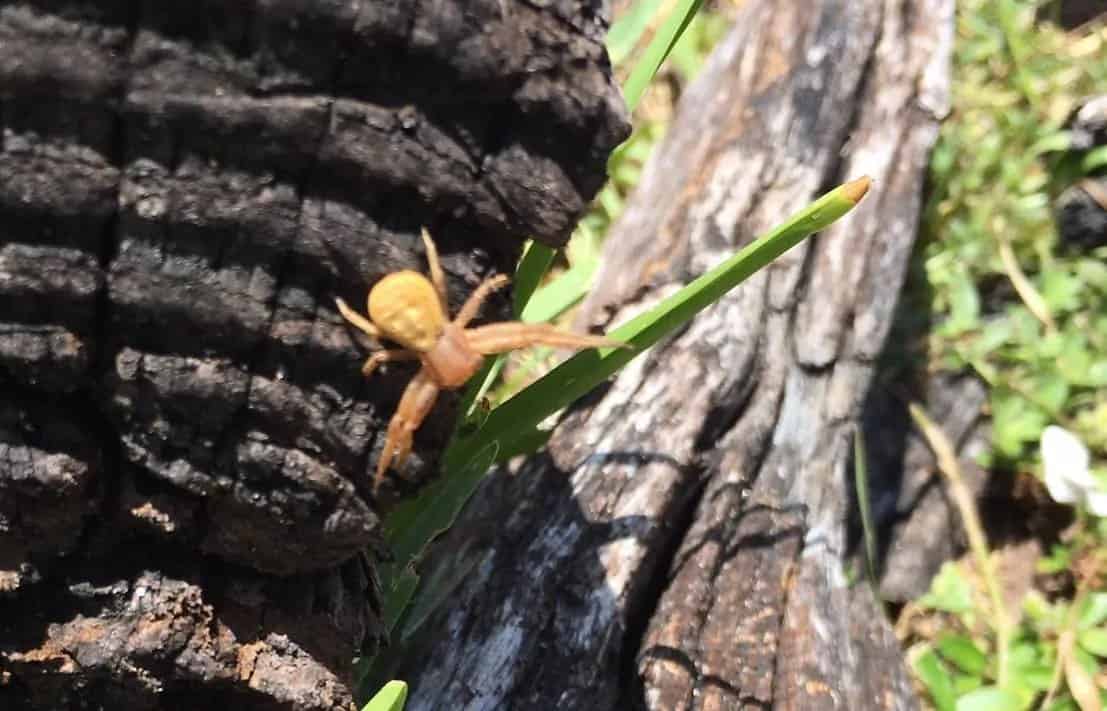
Termites
The Eastern Subterranean Termite (Reticulitermes flavipes) is the most common termite in North America. No other wood destroying insect causes as much damage as termites. Here in South Florida and along the treasure coast termites thrive. They invade from the untreated soil around and beneath structures and often go undetected until a great deal of damage is already done. At this point homeowners and businesses are then faced with the cost of repairs as well as termite extermination. In Florida new structures are required to have their foundation treated for the prevention of termites, but regular maintenance treatments are needed from then on to prevent infestation. St. Lucie and Martin County have also had cases of Formosan Termites, an even more difficult and destructive species of subterranean termite.
How to get rid of Termites
Can you get rid of Subterranean Termites yourself? In theory, yes. However, it is strongly recommended that homeowner and businesses hire a professional termite service for this kind of work. The reasons for this are several. Treating a home for existing termite problems or as a preventative treatment can be extremely complicated. There are pipes in the ground that need to be avoided while drilling, various soils accept termiticides differently and knowledge of how to deal with such a situation is critical. Product labels are complicated and failure to abide by the label is a violation of the law. Potential to taint groundwater and wells. Finally, mistreatment leaves the property unprotected and the homeowner with a false sense of security, making it more likely potential signs of termites go unnoticed or dismissed. For all of these reasons, if you suspect you have termites or want to protect your property from these damaging pests, call a pest control professional.
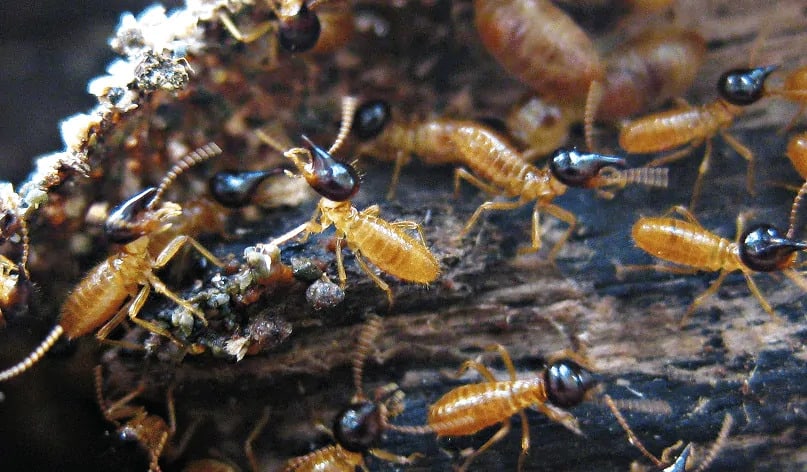
Tick
The Brown Dog Tick (Rhipicephalus sanguineus) is the most common pest tick on the Treasure Coast. Though there are several varieties of tick in Florida, the Brown Dog Tick is the only one that can thrive inside homes. Unlike its cousins, this tick readily tolerates lower temperatures and humidity, making it particularly difficult to control. Unlike the Deer Tick, it does not carry Lyme Disease. However, the Brown Dog Tick can transmit Rocky Mountain Spotted Fever – a potentially fatal disease. Brown Dog Ticks also carry numerous pathogens that can adversely impact the health of pets.
How to get rid of Ticks
From a homeowner’s perspective prevention is the only viable option. Attempting to control a problem once ticks have established themselves in the home would be both costly and ineffective. First and foremost, homeowners should always take care to avoid bringing their pests, particularly dogs, into areas where ticks are likely to be. This means dog parks and parks in general, kennels, and anywhere else other dogs are likely to frequent. The Brown Dog Tick’s preferred host is always a dog and therefore uncommon in secluded wooded areas. Take precautions when bring other dogs into your home or around your pet, and always keep pets on a monthly preventative flea and tick treatment. Though flea and tick baths can be a valuable tool, they offer virtually no preventative value.
If you find ticks inside your home, contact a professional exterminator as soon as possible.
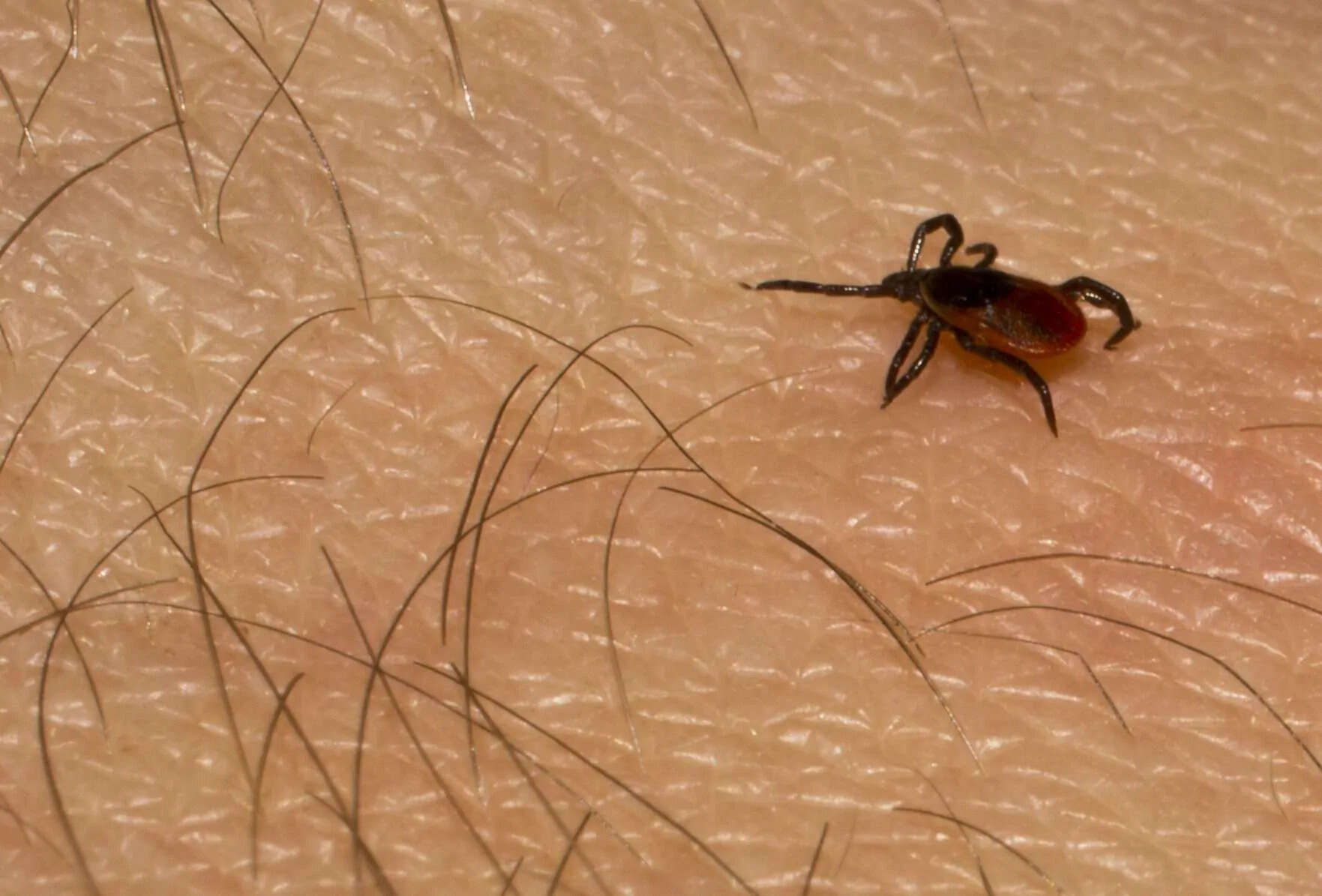
Wasp
The Paper Wasp (Polistes Carolina) gets its name from the appearance and texture of its nest. Using a mixture of fibrous plant material and its own saliva, the Paper Wasp builds a paper like nest for laying eggs. Unlike bees, wasp nests are typically small. A nest of a couple dozen individuals would be considered exceptionally large. These wasps are very common in Florida and can become a pest to homeowners. Because the Paper Wasps looks for dry undisturbed places to build their nests, they are commonly found under entryways, inside porch areas, and under eaves.
How to get rid of Paper Wasps
Almost any commonly available insecticide should be affective on wasps. However, it is important to purchase a product with an applicator that allows you to spray from some distance. Though these wasps are relatively docile, if provoked they will attack. As always, a professional bug service can relieve a lot of the hassle and danger associated with these stinging pests.
